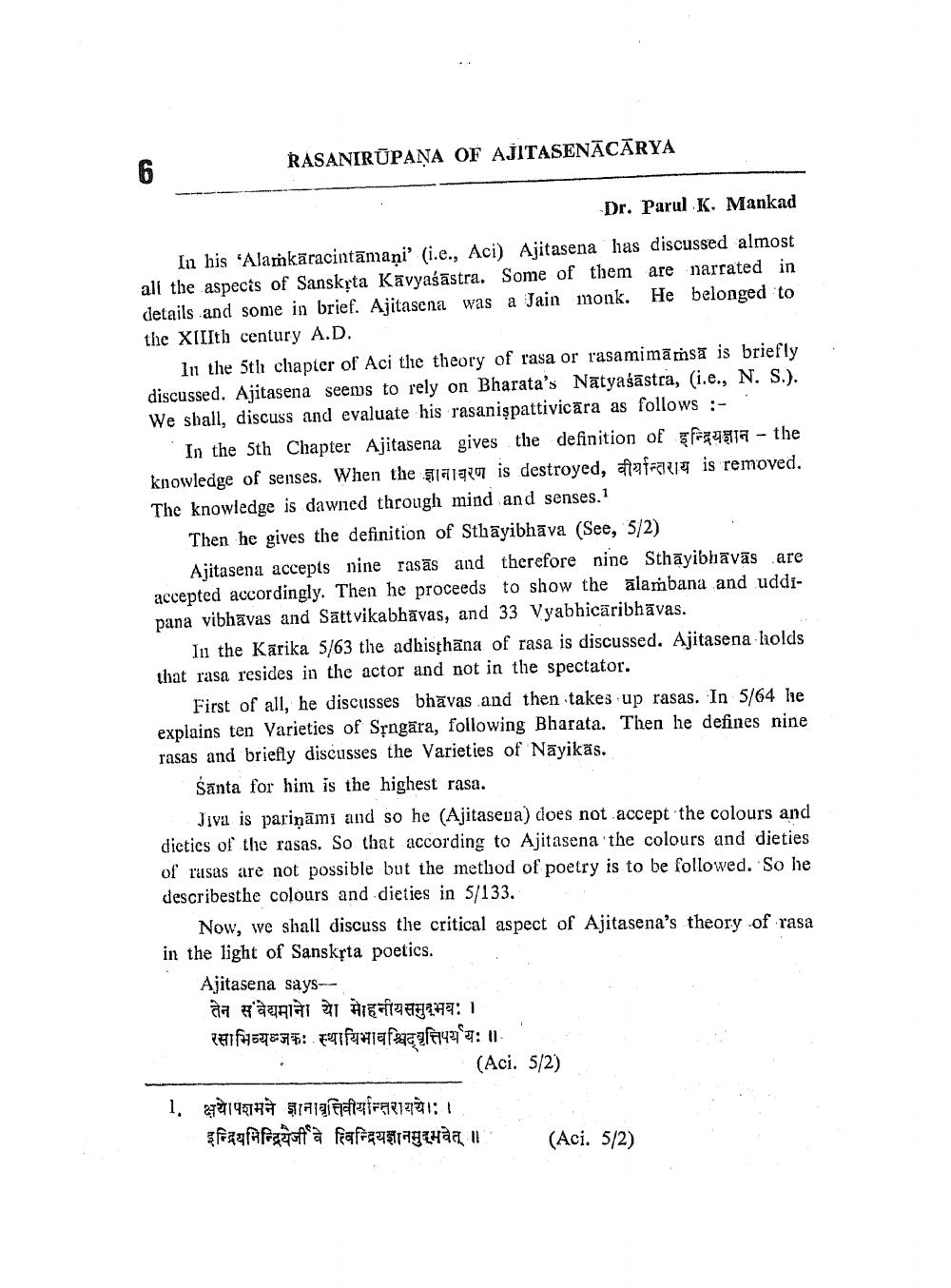________________
RASANIRŪPAŅA OF AJITASENĀCĀRYA
Dr. Parul K. Mankad
In his 'Alamkaracintāmani' (i.e., Aci) Ajitasena has discussed almost all the aspects of Sanskyta Kavyaśāstra. Some of them are narrated in details and some in brief. Ajitasena was a Jain monk. He belonged to the XIIIth century A.D.
In the 5th chapter of Aci the theory of rasa or rasamimāmsă is briefly discussed. Ajitasena seems to rely on Bharata's Natyaśāstra, (i.e., N. S.). We shall, discuss and evaluate his rasanişpattivicāra as follows :
In the 5th Chapter Ajitasena gives the definition of 9818 - the knowledge of senses. When the slalaza is destroyed, Haus is removed. The knowledge is dawned through mind and senses.
Then he gives the definition of Sthayibhāva (See, 5/2)
Ajitasena accepts nine rasās and therefore nine Sthayibhāvās are accepted accordingly. Then he proceeds to show the alambana and uddipana vibhāvas and Sättvikabhāvas, and 33 Vyabhicāribhāvas.
lu the Karika 5/63 the adhisthana of rasa is discussed. Ajitasena holds that rasa resides in the actor and not in the spectator.
First of all, he discusses bhāvas and then takes up rasas. In 5/64 le explains ten Varieties of Srngära, following Bharata. Then he defines nine rasas and briefly discusses the Varieties of Nāyikas.
Santa for him is the highest rasa.
Jiva is pariņāmi and so he (Ajitaseua) does not accept the colours and dictics of the rasas. So that according to Ajitasena the colours and dieties of rasas are not possible but the method of poetry is to be followed. So he describesthe colours and dieties in 5/133.
Now, we shall discuss the critical aspect of Ajitasena's theory of rasa in the light of Sanskỉta poetics.
Ajitasena saysतेन सवेद्यमानेो यो मोहनीयसमुद्भवः । रसाभिव्यजकः स्थायिभावश्चिदवृत्तिपर्ययः ।।
(Aci. 5/2) 1. 199789 salargatsirasiaa: 1
faqafgeta farsuaragwaal (Aci. 5/2)




